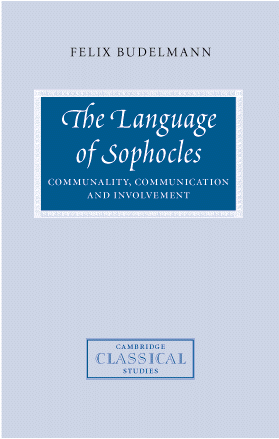Book contents
Introduction
Published online by Cambridge University Press: 15 August 2009
Summary
This is a study of Sophoclean language. As such it stands in a long tradition of scholarship, which begins already in antiquity. Most famously Plutarch reports that Sophocles himself traced a development in his style (λέξις). From Aeschylean grandeur (ὂγκος) he passed on to a pungent and artificial style (τò πικρòν καὶ κατάτεχνον τῆς αὑτοῦ κατασκεῆς) and finally to the best kind of writing, that which is most expressive of character (ἠθικώτατον). Plutarch is not alone: a substantial number of scattered remarks by various authors suggest that the language of Sophocles has interested spectators and readers from the very beginning.
This ancient interest was taken up by modern scholarship. In particular the end of the nineteenth century and the beginning of the twentieth saw a great number of works on various aspects of Sophoclean language. Titles like De assimilatione syntactica apud Sophoclem, De figurae quae vocatur etymologica usu Sophocleo or De Sophoclis quae vocantur abusionibus are representative of the aims and scope of many such treatises. Some of them are still widely used today. Lewis Campbell's ‘Introductory essay on the language of Sophocles’ at the beginning of his edition, Ewald Bruhn's Anhang to the edition by Friedrich Schneidewin and August Nauck, and Wilhelm Schmid's article on Sophocles in the Geschichte der griechischen Literatur contain highly valuable collections of material. All of them share an emphasis on syntactic, grammatical and linguistic features. What they are often less interested in is the context in which these features occur.
- Type
- Chapter
- Information
- The Language of SophoclesCommunality, Communication and Involvement, pp. 1 - 18Publisher: Cambridge University PressPrint publication year: 1999

